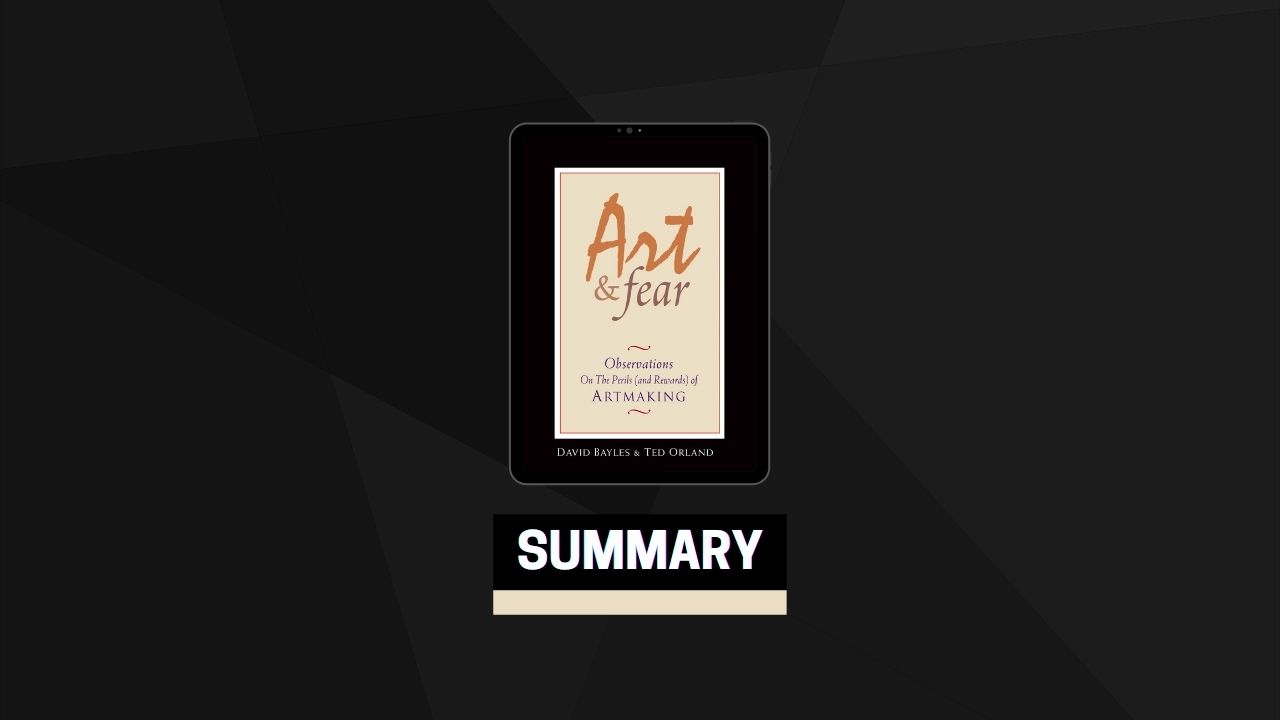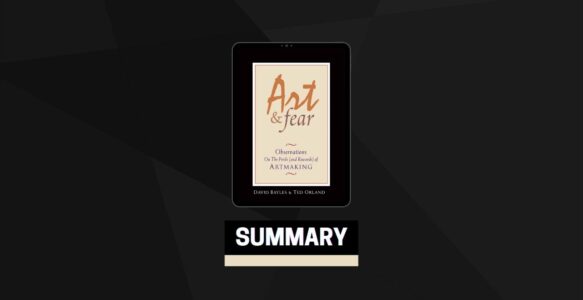VISION & EXECUTION
Fears arise when you look back, and they arise when you look ahead. If you’re prone to disaster fantasies you may even find yourself caught in the middle, staring at your half-finished canvas and fearing both that you lack the ability to finish it, and that no one will understand it if you do.
More often, though, fears rise in those entirely appropriate (and frequently recurring) moments when vision races ahead of execution. Consider the story of the young student — well, David Bayles, to be exact — who began piano studies with a Master. After a few months’ practice, David lamented to his teacher, “But I can hear the music so much better in my head than I can get out of my fingers.”
To which the Master replied, “What makes you think that ever changes?”
That’s why they’re called Masters. When he raised David’s discovery from an expression of self-doubt to a simple observation of reality, uncertainty became an asset. Lesson for the day: vision is always ahead of execution — and it should be. Vision, Uncertainty, and Knowledge of Materials are inevitabilities that all artists must acknowledge and learn from: vision is always ahead of execution, knowledge of materials is your contact with reality, and uncertainty is a virtue.
IMAGINATION
Imagination is in control when you begin making an object. The artwork’s potential is never higher than in that magic moment when the first brushstroke is applied, the first chord struck. But as the piece grows, technique and craft take over, and imagination becomes a less useful tool. A piece grows by becoming specific.
It’s the same for all media: the first few brushstrokes to the blank canvas satisfy the requirements of many possible paintings, while the last few fit only that painting — they could go nowhere else. The development of an imagined piece into an actual piece is a progression of decreasing possibilities, as each step in execution reduces future options by converting one — and only one — possibility into a reality. Finally, at some point or another, the piece could not be other than it is, and it is done.
That moment of completion is also, inevitably, a moment of loss — the loss of all the other forms the imagined piece might have taken. The irony here is that the piece you make is always one step removed from what you imagined, or what else you can imagine, or what you’re right on the edge of being able to imagine. Designer Charles Eames, arguably the quintessential Renaissance Man of the twentieth century, used to complain good-naturedly that he devoted only about one percent of his energy to conceiving a design — and the remaining ninety-nine percent to holding onto it as a project ran its course. Small surprise. After all, your imagination is free to race a hundred works ahead, conceiving pieces you could and perhaps should and maybe one day will execute — but not today, not in the piece at hand. All you can work on today is directly in front of you. Your job is to develop an imagination of the possible.
As Stanley Kunitz once commented, “The poem in the head is always perfect. Resistance begins when you try to convert it into language.” And it’s true, most artists don’t daydream about making great art — they daydream about having made great art. What artist has not experienced the feverish euphoria of composing the perfect thumbnail sketch, first draft, negative or melody — only to run headlong into a stone wall trying to convert that tantalizing hint into the finished mural, novel, photograph, sonata. The artist’s life is frustrating not because the passage is slow, but because he imagines it to be fast.
MATERIALS
The materials of art, like the thumbnail sketch, seduce us with their potential. The texture of the paper, the smell of the paint, the weight of the stone — all cast hints and innuendoes, beckoning our fantasies. In the presence of good materials, hopes grow and possibilities multiply. And with good reason: some materials are so readily charged and responsive that artists have turned to them for thousands of years, and probably will for thousands more. For many artists the response to a particular material has been intensely personal, as if the material spoke directly to them. It’s been said that as a child, Pablo Casals knew from the first moment he heard the sound of a cello, that that was his instrument.
But where materials have potential, they also have limits. Ink wants to flow, but not across just any surface; clay wants to hold a shape, but not just any shape. And in any case, without your active participation their potential remains just that — potential. Materials are like elementary particles: charged, but indifferent. They do not listen in on your fantasies, do not get up and move in response to your idle wishes. The blunt truth is, they do precisely what your hands make them do. The paint lays exactly where you put it; the words you wrote — not the ones you needed to write or thought about writing — are the only ones that appear on the paper. In the words of Ben Shahn, “The painter who stands before an empty canvas must think in terms of paint.”
What counts, in making art, is the actual fit between the contents of your head and the qualities of your materials. The knowledge you need to make that fit comes from noticing what really happens as you work — the way the materials respond, and the way that response (and resistance) suggest new ideas to you. It’s those real and ordinary changes that matter. Art is about carrying things out, and materials are what can be carried out. Because they are real, they are reliable.
UNCERTAINTY
All that you do will inevitably be flavored with uncertainty — uncertainty about what you have to say, about whether the materials are right, about whether the piece should be long or short, indeed about whether you’ll ever be satisfied with anything you make. Photographer Jerry Uelsmann once gave a slide lecture in which he showed every single image he had created in the span of one year: some hundred-odd pieces — all but about ten of which he judged insufficient and destroyed without ever exhibiting. Tolstoy, in the Age Before Typewriters, re-wrote War & Peace eight times and was still revising galley proofs as it finally rolled onto the press. William Kennedy gamely admitted that he re-wrote his own novel Legs eight times, and that “seven times it came out no good. Six times it was especially no good. The seventh time out it was pretty good, though it was way too long. My son was six years old by then and so was my novel and they were both about the same height.”
It is, in short, the normal state of affairs. The truth is that the piece of art which seems so profoundly right in its finished state may earlier have been only inches or seconds away from total collapse. Lincoln doubted his capacity to express what needed to be said at Gettysburg, yet pushed ahead anyway, knowing he was doing the best he could to present the ideas he needed to share. It’s always like that. Art is like beginning a sentence before you know its ending. The risks are obvious: you may never get to the end of the sentence at all-or having gotten there, you may not have said anything. This is probably not a good idea in public speaking, but it’s an excellent idea in making art.
Control, apparently, is not the answer. People who need certainty in their lives are less likely to make art that is risky, subversive, complicated, iffy, suggestive or spontaneous. What’s really needed is nothing more than a broad sense of what you are looking for, some strategy for how to find it, and an overriding willingness to embrace mistakes and surprises along the way.
Simply put, making art is chancy — it doesn’t mix well with predictability. Uncertainty is the essential, inevitable and all-pervasive companion to your desire to make art. And tolerance for uncertainty is the prerequisite to succeeding.


